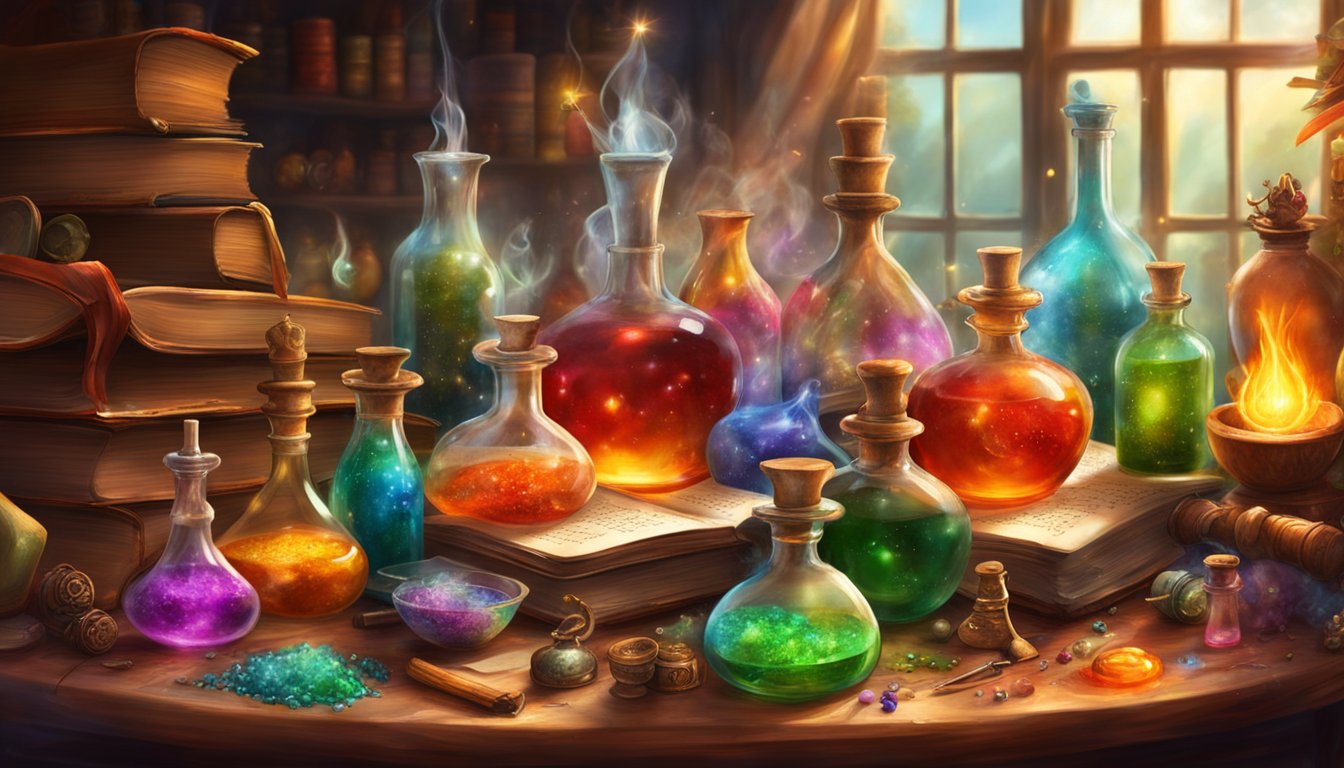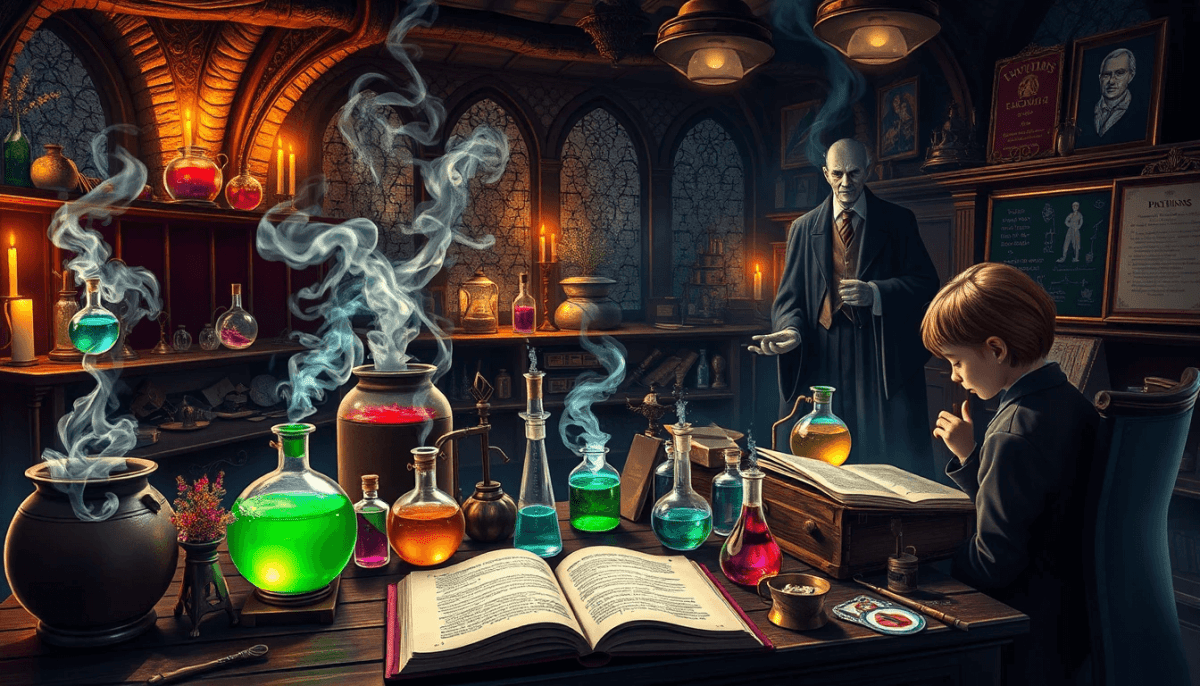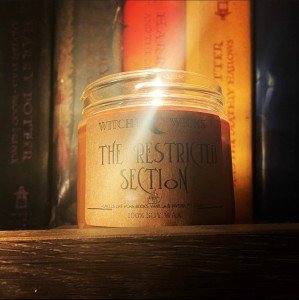Magic really pops when you step into the world of Harry Potter with its bubbling cauldrons and swirling vapors. Potions class is held in Hogwarts' dark and mysterious dungeons, where students learn how to whip up everything from simple healing mixes to more complex brews. These magical mixtures can do all sorts of things like heal wounds, change looks, and even spark artificial love, making them must-haves for any witch or wizard.
You’ll see a crowded table full of colorful liquids in vials that are bubbling away and filling the air with magical smoke, surrounded by spell books and magical ingredients.
Potion-making is no walk in the park; it needs precise measurements, the right ingredients, and perfect timing. Throughout the stories, you’ll come across a ton of fascinating brews. From the appearance-changing Polyjuice Potion to the luck-bringing Felix Felicis, every potion serves its own special purpose, often becoming a key player in the plot’s biggest moments.
Key Takeaways
- Potions can create powerful magic with the right brewing techniques and ingredients.
- Success in potion-making comes from paying close attention to details and timing.
- These magical brews can heal, disguise, and amp up abilities.
Potions and Their Impact in the Harry Potter Series
Potion-making at Hogwarts mixes scientific precision with magical flair. These concoctions can heal, change how you look, and even alter fate itself.
The Polyjuice Potion is one of the most important potions in the series. With it, you can turn into someone else for an hour, but it's tricky to make because of the complicated ingredients needed.
Felix Felicis, or liquid luck, gives you a stroke of good fortune for a short time. Meanwhile, Amortentia creates overpowering yet risky love, with a scent tailored to what each person finds most appealing.
Healing Potions are a big deal in the stories. You’ll often see Madam Pomfrey using them to quickly fix broken bones and other injuries.
Some potions, like the Draught of Living Death and Veritaserum, are a bit on the dark side. The first one makes you sleep like you’re dead, while the second one forces you to speak the truth.
A few potions need extra care during their making:
- Wolfsbane Potion: Helps werewolves keep control during transformations.
- Love Potions: Range from light attraction to full-blown obsession.
- Healing Potions: Cover simple cuts all the way to serious magical injuries.
Key Ingredients for Potions and What They Do
Potions depend on specific ingredients to create their magical effects. Each one has special properties that make it perfect for different brews.
Restricted Section 100% Soy Wax Candle
Bring the magic of Hogwarts into your home with this enchanting soy wax candle
Product information
$29.00
Product Review Score
4.73 out of 5 stars
138 reviewsProduct links
Magical Plants and Animals
You’ve got to handle Mandrake root with care because it’s key in making restorative potions, especially the Mandrake Restorative Draught, which can fix someone who's been petrified.
Asphodel is another essential ingredient you’ll find in many advanced potions. When mixed with wormwood, it makes the powerful Draught of Living Death.
Dittany is great for healing. You can put it straight on cuts, but it works best when used in prepared healing potions, helping to regrow skin and minimize scars.
A bezoar, which comes from a goat's stomach, is a lifesaver against most poisons. So always have one handy while working on your potions.
Minerals and Other Special Ingredients
Rare substances are crucial for many potions . For example, powdered moonstone is key in creating the Draught of Peace.
Armadillo bile packs a punch in wit-sharpening potions, but you need to measure so it doesn't go wrong.
The Beautification Potion needs refined ingredients like pearl dust and powdered silver, which have to be ground to just the right consistency.
Here’s a list of standard base materials:
- Unicorn horn (powdered)
- Dragon blood
- Phoenix tears
- Crystal phials
The Craft of Potion Making at Hogwarts
Potion-making at Hogwarts is all about precise measurements, timing, and a solid understanding of magic. Students dive into this intricate craft in the castle's dark dungeons, tackling everything from simple cures to whimsical brews.
Potioneers and Their Contributions
Professor Severus Snape , the strict Potions Master, shaped Hogwarts’ potions education for many years. His focus on details helped create lots of skilled potion brewers.
On the flip side, Professor Horace Slughorn brought a lighter touch, spotting talent and encouraging students to find their natural abilities. His approach helped students like Hermione Granger shine in making complicated potions.
Both teachers made their own twists to improve classic recipes. Snape's tweaks in his personal textbook showed how innovation can make potions more effective.
Noble Collection Harry Potter Fawkes Plush Toy
Cuddle up with Fawkes, the beloved phoenix, and bring a touch of magic to your collection!
Product information
$34.99
Product Review Score
4.85 out of 5 stars
15 reviewsProduct links
The Potion Curriculum
You start your first year with basic safety rules and easy potions. Each year builds on what you've learned, moving toward trickier brews.
The classroom setup includes:
- Enchanted blackboards with clear instructions
- Brass scales for exact measurements
- Cauldrons in various sizes and materials
Students need to pay close attention to:
- Preparing ingredients
- Controlling the heat
- Stirring correctly
- Timing when to add ingredients
Messing up could lead to wild outcomes like melting cauldrons or toxic gases. Doing it right calls for both technical skill and magical knowledge.
Potions for Special Reasons
Wizards and witches use potions for healing, changing looks, and gaining advantages. These special brews need exact ingredients and careful preparation to really work their magic.
Healing and Restorative Potions
Skele-Gro is what you need to regrow bones, but it can hurt a bit. If your bones disappear from a spell gone wrong, this potion is essential.
The Pepperup Potion helps fight colds and flu, but it comes with a funny side effect of steam billowing from your ears for a while after you drink it.
You can’t go wrong with a bezoar for most poisons, and the Antidote to Common Poisons helps neutralize various toxins.
The Wiggenweld Potion can wake folks from magical slumber and restore strength to those who are hurt.

Transformation and Concealment Potions
The Polyjuice Potion allows you to take on someone else’s appearance for one hour. Just remember, you need a piece of that person, like a hair, to pull it off.
The Invisibility Potion makes you invisible for a while. Unlike the invisibility cloak, this potion doesn’t last long.
Getting these potions right can take weeks or even months. Slip-ups might lead to weird transformations or scary side effects.
Potions for Boosting and Protection
The Strengthening Solution gives you a temporary physical boost when you need some extra muscle for tough tasks.
The tricky Elixir of Life helps you live longer and stay healthy, but it needs the Philosopher's Stone to make it.
Protection potions give you short-term immunity against spells and curses, so you have to use them at the right time since their effects don’t last forever.
Many enhancement potions require exact brewing conditions. Even little errors can make them go haywire or become dangerous.
With the right attitude and some practice, you'll be whipping up your own magical concoctions in no time!









